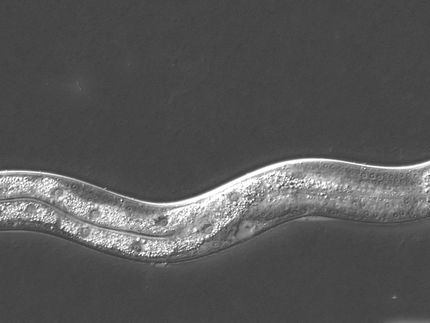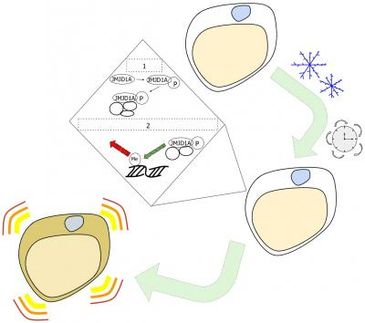Nuclear receptors battle it out during metamorphosis in new fruit fly model
Thomas Jefferson University researchers uncover how two nuclear receptors - EcR/Usp and E75A - work against each other during Drosophila metamorphosis
Growing up just got more complicated. Thomas Jefferson University biochemistry researchers have shown for the first time that the receptor for a major insect molting hormone doesn't activate and repress genes as once thought. In fact, it only activates genes, and it is out-competed by a heme-binding receptor to repress the same genes during the larval to pupal transition in the fruit fly.
For the last 20 years, the nuclear receptor known as EcR/Usp was thought to solely control gene transcription depending on the presence or absence of the hormone ecdysone, respectively. But it appears, researchers found, that E75A, a heme-binding receptor that represses genes, replaces EcR/Usp during metamorphosis when ecdysone is absent.
The findings, which could shed light on new ways to better understand and treat hormone-dependent diseases, such as cancer, were published in Molecular Cell.
"This is the first time we've shown that a steroid hormone receptor and heme-binding nuclear receptor are even interacting with each other," said Danika M. Johnston, Ph.D. "We didn't really think the two were competing against each other to bind to the same sequence of DNA and regulate the same genes."
More specifically, in the absence of ecdysone, both ecdysone receptor subunits localize to the cytoplasm, and the heme-binding nuclear receptor E75A replaces EcR/Usp at common target sequences in several genes. During the larval-pupal transition, a switch from gene activation by EcR/Usp to gene repression by E75A is triggered by a decrease in ecdysone concentration and by direct repression of the EcR gene by E75A.
An important nuance of this system is that the heme-binder E75A is sensitive to the amount of nitric oxide in the cell, and it cannot completely fulfill its repressive potential at high levels of this important molecule. Thus, the uncovered system uses changing amounts of two ligands, a steroid hormone and a gas, to regulate transcription during development.
"These were quite unexpected findings, given the longstanding thoughts of this process," said Dr. Johnston, "but we just didn't have the tools in the past to figure out what was going on mechanistically. We're painting a clearer picture now."
Knowing how nuclear receptors regulate gene expression in animal models can provide useful information in the development of drugs. Today, the molecular targets of roughly 13 percent of U.S. Food and Drug Administration approved drugs are nuclear receptors.
"It's very possible that similar situations exist in the mammalian system. That could ultimately lead to different treatments that regulate hormone levels in hormone-dependent diseases, such as cancer," said Dr. Johnston.
Most read news
Other news from the department science

Get the life science industry in your inbox
By submitting this form you agree that LUMITOS AG will send you the newsletter(s) selected above by email. Your data will not be passed on to third parties. Your data will be stored and processed in accordance with our data protection regulations. LUMITOS may contact you by email for the purpose of advertising or market and opinion surveys. You can revoke your consent at any time without giving reasons to LUMITOS AG, Ernst-Augustin-Str. 2, 12489 Berlin, Germany or by e-mail at revoke@lumitos.com with effect for the future. In addition, each email contains a link to unsubscribe from the corresponding newsletter.




















































